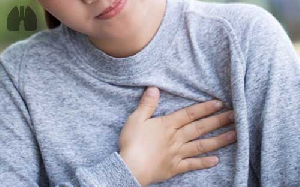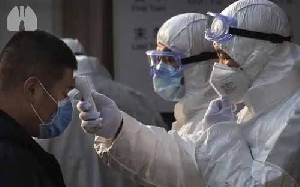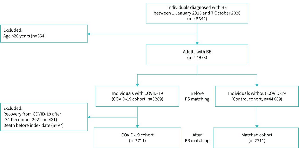
David G. Chapman, Tanya Badal, Gregory G. King, Cindy Thamrin
European Respiratory Journal 2020; DOI: 10.1183/13993003.03263-2020
Reduced KCO in discharged patients with COVID-19 suggests persistent abnormalities in gas exchange. Further research is required to understand why.
To the Editor,
We read with much interest the recent findings published in the European Respiratory Journal of reduced gas transfer in patients following COVID-19. Drs Mo et al. investigated conventional pulmonary function in survivors of mild, moderate and severe COVID-19 approximately 20–30 days after onset of symptoms. While patients had relatively normal spirometry, DLCO was reduced in 50% and DLCO/VA (or KCO, to avoid misinterpretation) reduced in 25%. These findings are welcome as they provide significant insight into the long-term lung function impairment associated with COVID-19.
In response, Dr Nusair contributed the interpretation that “low DLCO is caused mainly by reduced alveolar volume, and not residual interstitial abnormalities or pulmonary vascular abnormalities caused by COVID-19” i.e. normal capillary-alveolar units. However, we believe that this interpretation does not consider the complex relationship between VA, DLCO and KCO, and may prematurely rule out the presence of abnormal gas exchange. To demonstrate our point, figure 1 illustrates the expected effect of a reduction in VA on DLCO and KCO due to either suboptimal alveolar expansion or loss of alveolar units (with normal expansion in communicating alveoli). Firstly, it is evident that in the “severe pneumonia” patients in the study by Mo et al. the impairment in DLCO (represented by the star) is considerably greater than expected if a reduction in VA was the sole abnormality, regardless of the mechanism for the reduced VA. Secondly, a reduction in VA due to either aforementioned mechanism would be is associated with an increase in KCO, which is opposite to the reduced KCO in many of the discharged patients with severe COVID-19. This reduction in KCO suggests that loss of alveolar units is not sufficient to cause the observed impairment in DLCO.
FIGURE 1
The relationship between alveolar volume (VA) and, (a) diffusing capacity for carbon monoxide (DLCO) and (b) rate constant for CO uptake (KCO), are plotted as a percentage of the value at total lung capacity (TLC). The relationships are shown for two situations that result in reduced VA; i) suboptimal alveolar expansion (DLCO and KCO measured at volumes below maximum TLC, solid line), ii) loss of alveolar units (e.g. theoretical removal of lobules or lobes with remaining lung expanded to its normal TLC, dashed line). The star («) represents the group mean data of the “severe pneumonia” from Mo et al. . Mean VA was calculated as mean percent predicted DLCO/mean percent predicted KCO. The relationship between VA, DLCO and KCO was calculated using the equations as described in.: for suboptimal alveolar expansion, KCO = 0.43 + (0.57/VA); for loss of alveolar lung units, change in KCO + 0.4x + 2.1 where x = the proportion of volume diverted to the remaining lung; for both scenarios, DLCO = VA*KCO.
Thus, while the DLCO findings of Mo et al. are partially explained by reduced VA, the reduction in KCO measured at that reduced VA also implicates abnormal gas exchange. Whether this is due to disruption of the alveolar-capillary barrier or abnormal pulmonary blood volume cannot be determined based on their data. Lung fibrosis associated with acute respiratory distress syndrome in COVID-19 patients , would likely damage alveolar-capillary units, leading to loss of alveolar units and impaired gas exchange. The result would be a reduction in both VA and KCO (for the reduced VA). There is increasing suggestion of altered pulmonary haemodynamics in COVID-19 patients , including vascular pruning and reduced pulmonary blood volume measured via high resolution CT . Use of more specific measures of the alveolar-capillary membrane, such as combined DLCO and DLNO measurements or advanced imaging techniques, are likely required to determine whether interstitial abnormalities or pulmonary vascular abnormalities contribute to reduced DLCO in patients who have recovered from COVID-19.
Footnotes
-
Conflict of interest: Dr. Chapman has nothing to disclose.
-
Conflict of interest: Dr. Badal has nothing to disclose.
-
Conflict of interest: Dr. King reports personal fees, non-financial support and other from AstraZeneca, Boehringer Ingelheim, GSK, Menarini, MundiPharma and Novartis, from NHMRC, Boehringer Ingelheim, CycloPharma, GlaxoSmithKline, Menarini, MundiPharma, Philanthropic individuals and societies, non-financial support from Restech, outside the submitted work.
-
Conflict of interest: Dr. Thamrin has nothing to disclose.
- Received August 25, 2020.
- Accepted October 14, 2020.
- Copyright ©ERS 2020















